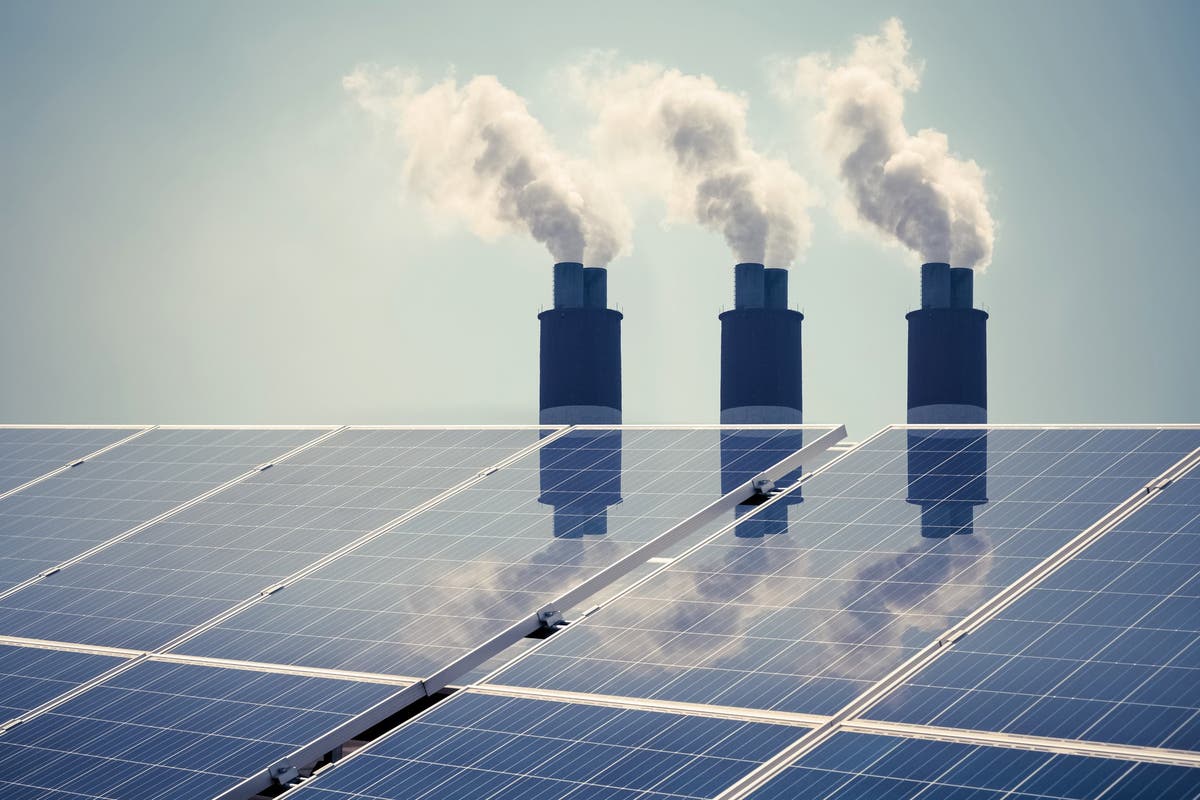Europe generated more electricity from solar and wind than coal and gas last year, according to a new report, marking a major milestone in the transition towards renewable energy.
Nearly half of all electricity generated in the EU in 2024 came from renewables (47 per cent), with fossil fuel generation declining by nearly 9 per cent since the previous year, energy think tank Ember found.
Analysts have pointed to the European Green Deal, which was drawn up in 2019, as one of the main drivers for the rise in renewables and decline in fossil fuels. In the five years since, solar capacity has tripled and wind capacity has grown by 37 per cent, which has cumulatively saved around 460 million tonnes of CO2 emissions.
The increase in renewable energy production also helped Europe avoid €59 billion (£50bn) in fossil fuel import costs over the last five years.
“Fossil fuels are losing their grip on EU energy,” said Dr Chris Rosslowe, a senior energy analyst at Ember and lead author of the report.
“At the start of the European Green Deal in 2019, few thought the EU’s energy transition could be where it is today; wind and solar are pushing coal to the margins and forcing gas into structural decline.”
Ember’s European Electricity Review, which was published on Thursday, analysed power supplies in all 27 EU countries to reveal that solar is growing in every single country, making up 11 per cent of the block’s electricity generation.
“The EU is striding closer towards a clean energy future powered by homegrown wind and solar,” said Dr Beatrice Petrovich, a senior energy analyst at Ember.
“This new energy system will reduce the bloc’s vulnerability to fossil price shocks, tackle the climate crisis and deliver affordable energy for its households and companies.”
Despite the progress towards transitioning to clean energy sources, experts warned that the trend must continue to accelerate in order to reach climate targets, while the electrification of major industries like transport also needs to improve.
“While the EU’s electricity transition has moved faster than anyone expected in the last five years, further progress cannot be taken for granted,” said Dr Rosslowe.
“Delivery needs to be accelerated particularly in the wind sector, which has faced unique challenges and a widening delivery gap. Between now and 2030, annual wind additions need to more than double compared to 2024 levels.”
Walburga Hemetsberger, chief executive of SolarPower Europe, added: “Renewables are steadily pushing fossil fuels to the margins, with solar leading the way. We now need more flexibility to kick-in, making sure the energy system is adapting to new realities: more storage and more smart electrification in heating, transport and industries.”
Ember’s report comes just three days after US President Donald Trump once again withdrew the United States from the Paris Agreement, which aims to limit global warming and the worst impacts of climate change by cutting greenhouse gas emissions.
EU chief Ursula von der Leyen said in response to the US’s withdrawal from the international climate accord that Europe would “stay the course” and continue working with other countries in order to “protect nature and stop global warming”.




